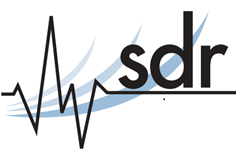Working Groups
Active:
International Disaster Risk Reduction Working
Group
The purpose of the International Disaster Risk Reduction Working
Group is to facilitate and promote international cooperation in
science and technology as it relates to all phases of natural and
technological disasters. The working group provides an interagency
forum for the exchange of information and identifies and coordinates
opportunities for beneficial collaborations. The group also
coordinates the SDR's role as the U.S. National Platform for the UN Office of
Disaster Risk Reduction (UNDRR). In this role, the IDRRWG
collects U.S. disaster loss and preparedness data and reports
progress toward implementing the Sendai
Framework for Disaster Risk Reduction
(2015-2030).
Hazards and Natural Capital Accounting Working
Group
The Hazards and Natural Capital Accounting Working Group was formed
to create an implementation plan for the National Strategy to
Develop Statistics for Environmental-Economic Decisions specific to
hazards, extreme weather and climate events, and resilience. The goal of
this implementation plan was to inform, a U.S. system for
tracking the value of natural assets to disaster risk reduction and
the impact of natural hazards on the loss of natural assets. Such an
accounting system will help provide a fuller understanding of the
U.S. economy and cost of hazard mitigation and recovery.
Past:
Hazard Decision Support Tools Working Group
The Hazard Decision Support Tools Working Group reviewed the
landscape of federally-produced multi-hazard decision support tools
to facilitate and promote interagency coordination. This effort
identified the tools and associated data each agency produces and
identified similarities and differences across these resources. The
group shared its results with the National Science and Technology
Council Subcommittee on Climate Services.
Integrating GEO and Health Data in Disasters Working
Group
The SDR Data Integration Working Group
facilitate and promote opportunities for coordination of data
collection and sharing in response to disasters. The effort
explored the availability geoscience, atmospheric, and human health
data that can be used to help federal agencies answer high priority
questions of concern in response to a disaster situation, using
wildfires in Sonoma County, California as a test case scenario.
Understanding the types and scale of data being collected about air,
water, soil, and built environment exposures in combination with
understanding population vulnerabilities and health impacts, will
strengthen informed decision-making, risk communication and related
efforts to improve response, recovery, and future preparedness.
Real Time Flood Inundation Mapping Working
Group
Federal, state, local, and/or tribal users of real-time flood
inundation mapping products produced by Federal government agencies
immediately prior to, during, and after a flood event expressed
uncertainty about which products to use when. As a result, Science
for Disaster Reduction (SDR) launched a Real-time Flood Inundation
Mapping Working Group (RTFIMWG) on March 25, 2019 to coordinate
flood inundation mapping across federal agencies. The RTFIMWG was
charged with the following:
- Reach a common understanding regarding each agency’s missions and boundaries, the tools they have currently, where and when these tools can be applied, the decision space those tools are trying to influence, and the tools that are in development; and
- Use this common understanding to communicate a holistic real-time flood inundation mapping products story leveraging product interoperability, providing guidance to users about which products to use when, and identifying new technologies and procedures for inundation mapping.
RTFIMWG concluded their activities on December 31, 2019 with two deliverables:
- Deliverable 1 is an infographic that summarizes what information agencies are producing prior, during, and following a flood event.
- Deliverable 2 is a high-level memo, which provides recommendations from the RTFIMWG’s members’ collaboration.

